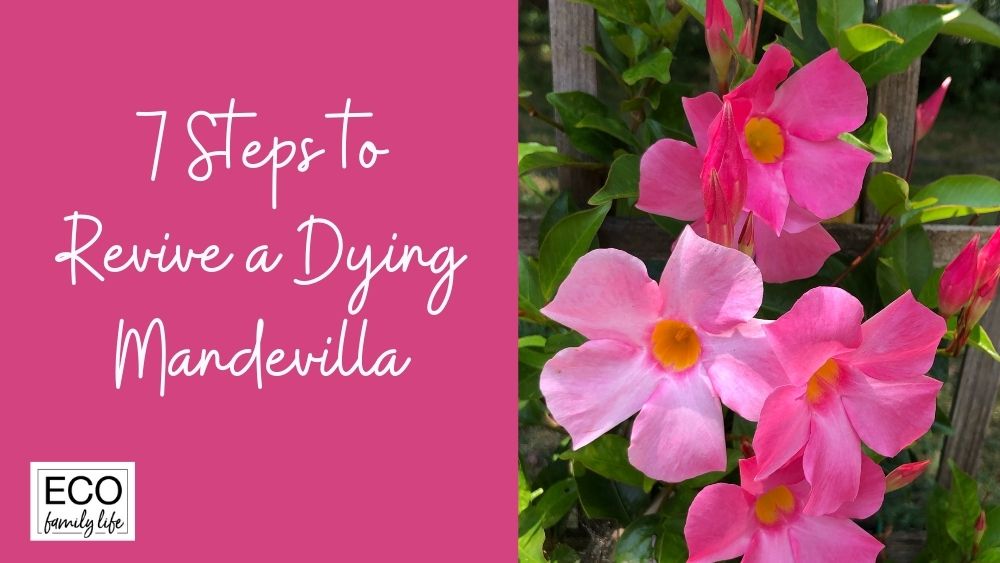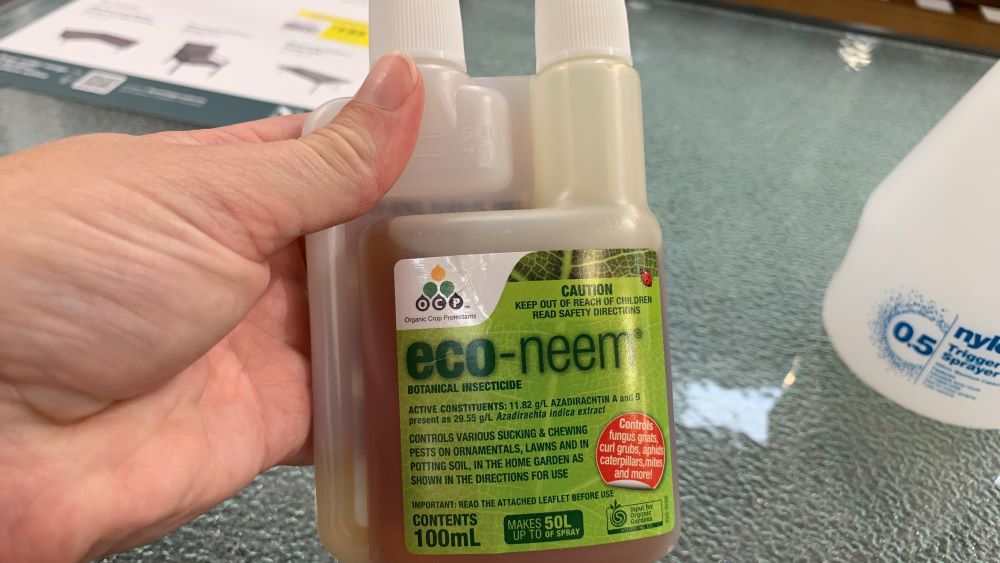Mandevilla are subtropical plants that grow well indoors and outdoors in the right conditions. Also known as a rock trumpet, the plant is showy and gorgeous, and is a true eye-catcher. The traditional mandevilla plants grow as trailing vine while new varieties will grow as a small bush and can even be shaped into a hedge. The vine varieties look great and can be trained up a garden screen or grown in a hanging basket.
Mandevilla plants can run into problems from time to time, but that doesn’t mean it is difficult to remedy the problem. Mandevilla plants can die due to a lack of nutrients, poor drainage, or from pest attack such as spider mites. But once you know how to identify the problem, it’s super-easy to take care of it.
Let’s take a look at some of the top reasons mandevilla die and 7 steps to revive them.

1. Leaves Turning Yellow and Falling Off
The older leaves of the mandevilla plant will eventually turn yellow then fall off; for that, there is no cure or remedy. If you see yellowing at the base of the plant, you don’t have to do anything because this is perfectly normal.
If new mandevilla leaves are turning yellow then it is usually caused by a lack of nitrogen or a lack of water. Feed the plant with pelleted chicken manure outdoors or a complete slow release indoor fertilizer if you keep them inside. Water the plant well to help the fertilizer to break down and release to the plant.
2. Nutrient Deficiencies and Soil pH
Sometimes, mandevilla plants suffer from yellowing that starts on the leaves themselves, and this is usually due to either poor soil or pH levels in the soil that are too high.
To avoid this, make sure the pH level of your soil remains between 6.7 and 7.5. It is easy to test the soil, and you should do this regularly so you know how to treat the plants to keep them alive. There are also two main types of nutrient deficiencies:
- Iron deficiency. You’ll know this is the problem when the yellowing starts on the younger leaves then spreads to the older leaves.
- Zinc, manganese, or nitrogen deficiency. This will be evident when the older leaves become yellow followed by the younger leaves.
If the yellowing begins at the base of the plant, it means the older leaves will be falling off soon to make way for new ones.
3. Inefficient Drainage
Poor soil drainage can kill madevilla plants that prefer free draining soil. Choose a good quality potting mix that drains well. Premium, all-purpose potting mixes will allow the roots to get the air movement, water and nutrients they need.
It is important that your pots or hanging baskets have good draining. Make sure the pots have at least 5 drainage holes which are not blocked. Add extra holes with a drill if there is only a hole in the center of the pot.
Avoid leaving the potting sitting in a tray of water as this can cause the roots to rot and the plant can die. When the roots are affected by fungal rot, won’t be able to absorb water or nutrients as easily, so the plant cannot grow properly. This, in turn, causes the leaves of the mandevilla plant to turn yellow and the plant can die.
4. Spider Mite Infection
Spider mites can infect mandevilla sucking the sap from the leaves These pests are tiny, usually black dots which can be tricky to see. A mandevilla that has been attacked by spider mite will develop brownish-bronze colored leaves which dry up, then fall off of the plant.
Spider mite can be treated with Neem oil which will quickly get rid of the pests without harming good insects like bees. Neem oil is found at most gardening centers and can be diluted in spray bottle at home.

I use neem oil for spider mite, aphids, bronze orange bugs and thrips.
5. Crowded Roots
Sometimes, the roots of the mandevilla plant get too crowded, which affects their ability to absorb water and nutrients. Because of this, the leaves of the plant can become yellow if the plant is not getting the nutrients it needs.
To fix the problem repot the plant in a bigger pot or garden bed with well-draining soil. You can trim off any damaged roots and gently tease the roots. This will help the roots to reach out and grow well in their new pot.
6. Southern Wilt
Southern wilt, also called Southern Blight, this is a disease specifically caused by bacteria, and it turns the leaves of the plant yellow. It can also turn them brown and cause them to fall off afterwards.
The thing about Southern wilt is that nothing can be done about it. If you even think that your plant has been affected by this disease, you should throw out the plant so that it doesn’t spread throughout your garden.
7. Powdery Mildew
Powdery mildew is a fungal disease that causes both sides of the leaves to look like powder has been rubbed on them. It’s usually very easy to diagnose, and all you have to do is prune out the affected leaves then spray the leaves with horticultural oil to prevent the disease from spreading.
Prune the plant lightly to allow more air movement and avoid watering on the leaves which can encourage fungal growth.
Conclusion
Mandevilla are beautiful vines that but can develop a range of issues if they are not getting what they need. If the problem is not dealt with the plant can die quickly. If you pay close attention and learn to recognize the symptoms, the solutions are easy to apply.
Keep in mind that for mandevilla plants to thrive, they should be brought indoors if the temperature drops below 50 degrees Fahrenheit. The plants love being in partial shade, but you can place them in indirect sunlight for 6 hours a day to help them grow.
The most common problems with mandevilla are caused by poor nutrition, poor drainage, and certain infections or diseases.
These things being said, mandevilla plants are not difficult to take care of. All they really need is regular water, nutrients, and indirect light.
Happy growing.
I am an accredited practicing dietitian, experienced gardener and a dedicated cook. I love writing and sharing my experience so you can learn from my successes and mistakes.
